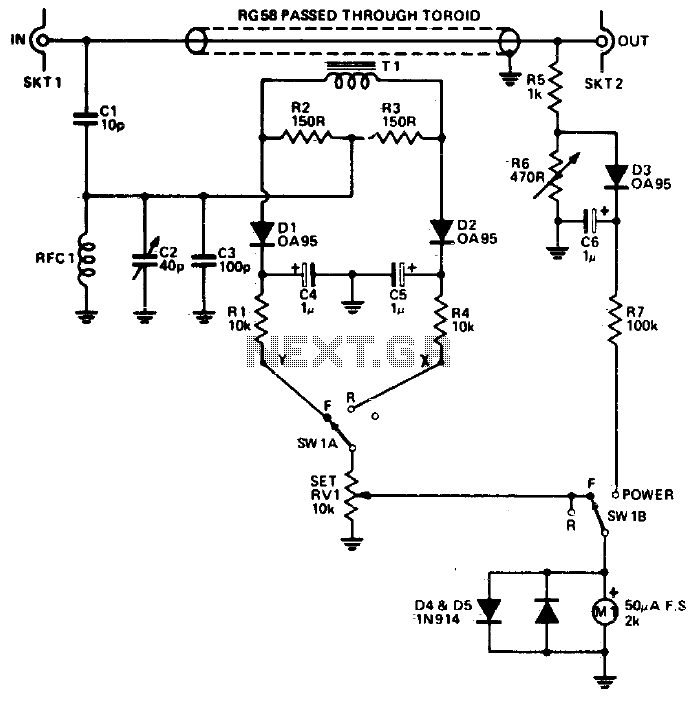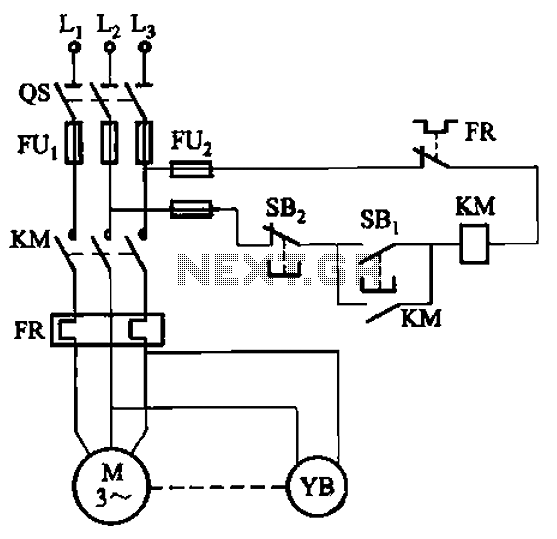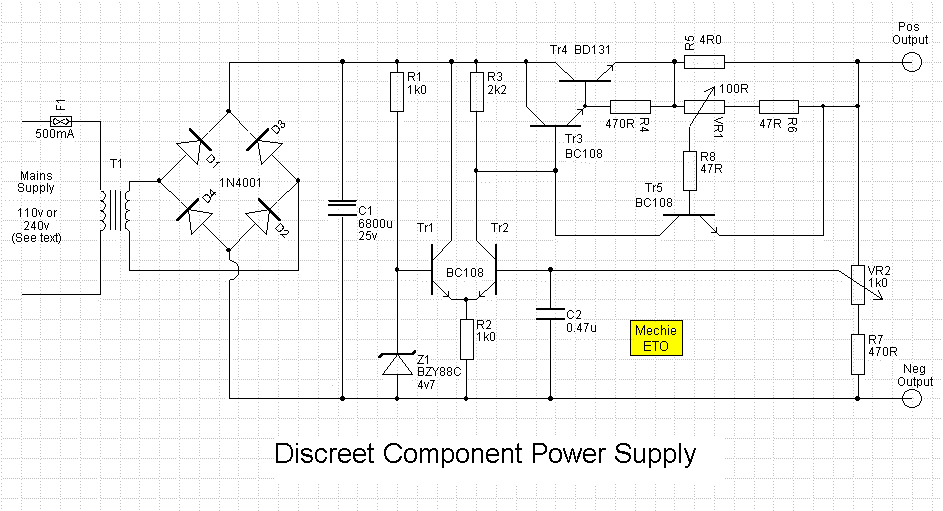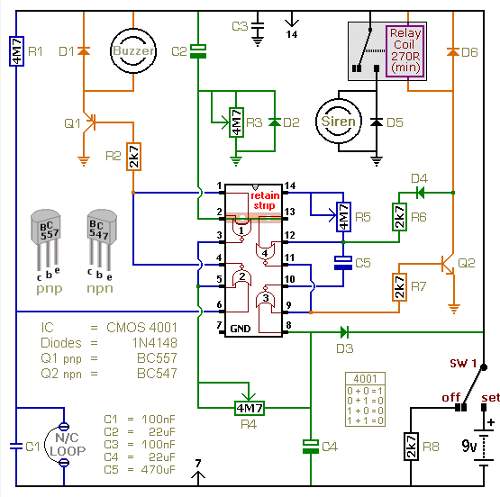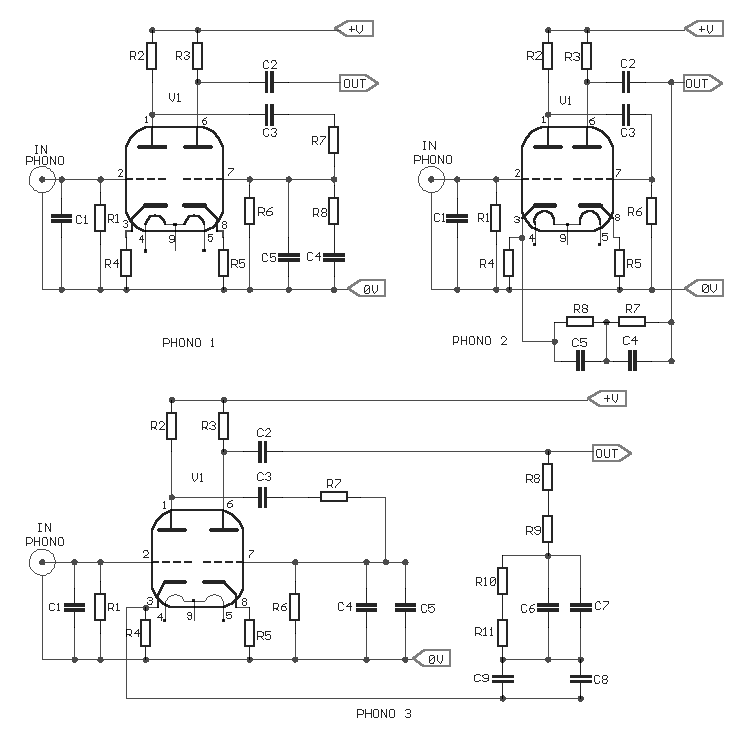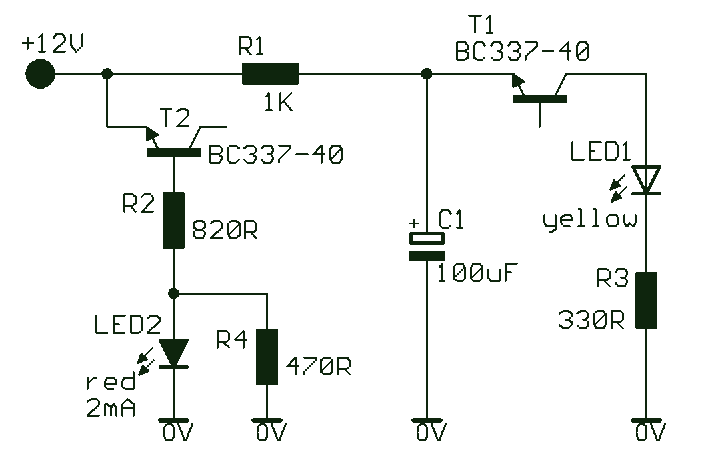
Power Supply for Standalone Preamp
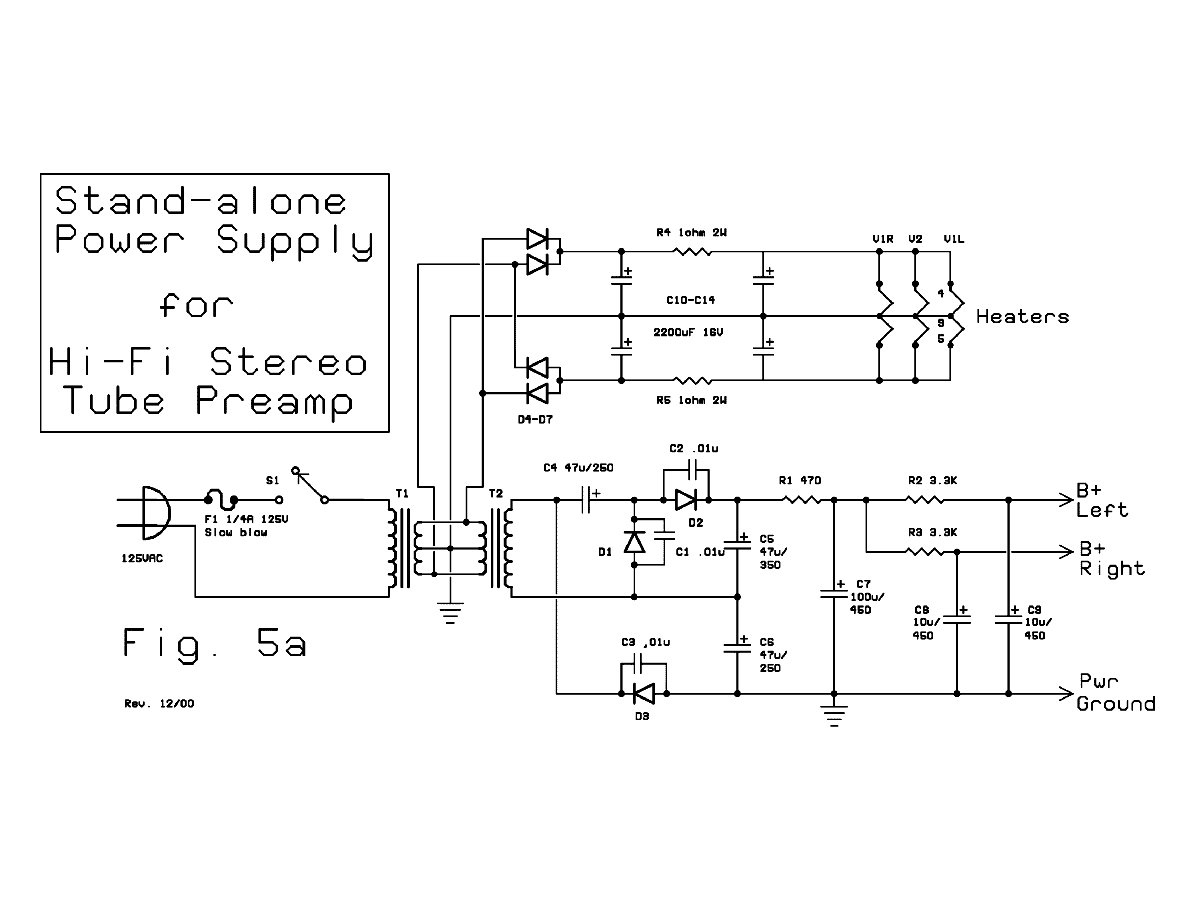
When constructing a dual stand-alone preamplifier, such as a stereo magnetic phono preamp, the power supply requirements are significantly reduced. A simple power supply circuit is illustrated, utilizing readily available 12-volt, 0.5-ampere transformers, although units capable of 1 ampere are preferred for continuous operation. The 12-volt output from the first transformer powers the filaments and is also connected to a second transformer configured as a step-up device to deliver approximately 110 VAC. This voltage is then supplied to a voltage tripler circuit that generates the 400+ volts necessary for the preamplifier circuitry.
The described circuit features a dual stand-alone preamplifier, specifically designed for stereo magnetic phono applications. The reduced power supply requirements facilitate the use of compact and efficient transformers. The first transformer, rated at 12 volts and 0.5 amperes, serves dual functions: it powers the filaments of the preamplifier and provides the input voltage for the second transformer.
The second transformer is configured as a step-up transformer, which increases the voltage to approximately 110 VAC. This higher voltage is essential for the proper operation of the voltage tripler circuit. The voltage tripler circuit typically consists of capacitors and diodes arranged to multiply the input voltage, resulting in an output voltage exceeding 400 volts. This high voltage is crucial for the functioning of the preamplifier circuitry, which requires significant voltage levels to amplify the low-level signals from the phono cartridge effectively.
In summary, this power supply design emphasizes simplicity and efficiency while meeting the specific voltage and current requirements of the dual stand-alone preamplifier. The use of readily available components ensures ease of construction and reliability in performance.If you`re just building a dual stand-alone preamplifier (as for, say, a stereo magnetic phono preamp), your power supply requirements will of course be greatly reduced. Figure 5A shows a simple supply using readily-available 12 volt, 1/2 ampere transformers (units capable of 1 ampere preferred for continuous operation).
The 12 volt output from the first transformer is used to power the filaments, and is also fed to the second transformer connected as a step-up device to provide about 110 VAC. This supplies a voltage tripler circuit that provides the 400+ volts required for the preamplifier circuitry.
🔗 External reference
The described circuit features a dual stand-alone preamplifier, specifically designed for stereo magnetic phono applications. The reduced power supply requirements facilitate the use of compact and efficient transformers. The first transformer, rated at 12 volts and 0.5 amperes, serves dual functions: it powers the filaments of the preamplifier and provides the input voltage for the second transformer.
The second transformer is configured as a step-up transformer, which increases the voltage to approximately 110 VAC. This higher voltage is essential for the proper operation of the voltage tripler circuit. The voltage tripler circuit typically consists of capacitors and diodes arranged to multiply the input voltage, resulting in an output voltage exceeding 400 volts. This high voltage is crucial for the functioning of the preamplifier circuitry, which requires significant voltage levels to amplify the low-level signals from the phono cartridge effectively.
In summary, this power supply design emphasizes simplicity and efficiency while meeting the specific voltage and current requirements of the dual stand-alone preamplifier. The use of readily available components ensures ease of construction and reliability in performance.If you`re just building a dual stand-alone preamplifier (as for, say, a stereo magnetic phono preamp), your power supply requirements will of course be greatly reduced. Figure 5A shows a simple supply using readily-available 12 volt, 1/2 ampere transformers (units capable of 1 ampere preferred for continuous operation).
The 12 volt output from the first transformer is used to power the filaments, and is also fed to the second transformer connected as a step-up device to provide about 110 VAC. This supplies a voltage tripler circuit that provides the 400+ volts required for the preamplifier circuitry.
🔗 External reference
